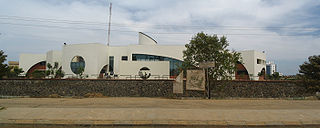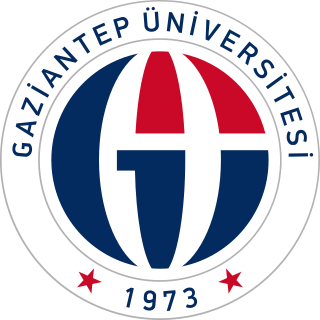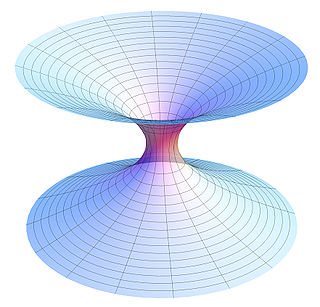Related Research Articles

Physics is the scientific study of matter, its fundamental constituents, its motion and behavior through space and time, and the related entities of energy and force. Physics is one of the most fundamental scientific disciplines. A scientist who specializes in the field of physics is called a physicist.

A physicist is a scientist who specializes in the field of physics, which encompasses the interactions of matter and energy at all length and time scales in the physical universe. Physicists generally are interested in the root or ultimate causes of phenomena, and usually frame their understanding in mathematical terms. They work across a wide range of research fields, spanning all length scales: from sub-atomic and particle physics, through biological physics, to cosmological length scales encompassing the universe as a whole. The field generally includes two types of physicists: experimental physicists who specialize in the observation of natural phenomena and the development and analysis of experiments, and theoretical physicists who specialize in mathematical modeling of physical systems to rationalize, explain and predict natural phenomena.
A Bachelor of Applied Science is an undergraduate academic degree of applied sciences.

Theoretical computer science is a subfield of computer science and mathematics that focuses on the abstract and mathematical foundations of computation.
Engineering physics (EP), sometimes engineering science, is the field of study combining pure science disciplines and engineering disciplines.

Łódź University of Technology was created in 1945 and has developed into one of the biggest technical universities in Poland. Originally located in an old factory building, today it covers nearly 200,000 sq. meters in over 70 separate buildings, the majority of which are situated in the main University area. As of 2018, around 15,000 students studied at the university. The educational and scientific tasks of the university are carried out by about 3,000 staff members.
The Courant Institute of Mathematical Sciences is the mathematics research school of New York University (NYU). Founded in 1935, it is named after Richard Courant, one of the founders of the Courant Institute and also a mathematics professor at New York University from 1936 to 1972, and serves as a center for research and advanced training in computer science and mathematics. It is located on Gould Plaza next to the Stern School of Business and the economics department of the College of Arts and Science.

Indian Statistical Institute (ISI) is a public research university headquartered in Kolkata, West Bengal, India. It was declared an Institute of National Importance by the Government of India under the Indian Statistical Institute Act, 1959. Established in 1931, it functions under the Ministry of Statistics and Programme Implementation of the Government of India.

Chennai Mathematical Institute (CMI) is a higher education and research institute in Chennai, India. It was founded in 1989 by the SPIC Science Foundation, and offers undergraduate and postgraduate programmes in physics, mathematics and computer science. CMI is noted for its research in algebraic geometry, in particular in the area of moduli of bundles.

Gaziantep University is a public university established on June 27, 1987, traces its origins to 1973 as an extension campus of the Middle East Technical University. Located in Gaziantep, Turkey, the university has 20 faculties and is recognized for its focus on scientific and technological research. The main campus is near Gaziantep's city center, with additional campuses in neighboring areas. English is the primary language of instruction, and the university ranked among the top 1,000 in the Times Higher Education World University Rankings for 2020–2021.

Yazd University is a public research university in Yazd, Iran. It is a major state-funded research center in central Iran and the academic center of Yazd province and was the first comprehensive institute of higher education established after the 1979 Islamic revolution. It is also the principal heir to the former University College Yazd . Yazd University is considered to be among the top 10 comprehensive universities in Iran and it is among 200 best world's young universities. The university was founded in 1989 by a merger of several older institutions and grew rapidly over the years. Its main campus is located in Safaeeyeh. There are four other campuses and two autonomous schools, all located within or in the vicinity of the city of Yazd.
The Whiting School of Engineering is the engineering school of the Johns Hopkins University, a private research university in Baltimore, Maryland.
The branches of science, also referred to as sciences, scientificfields or scientific disciplines, are commonly divided into three major groups:

Theoretical physics is a branch of physics that employs mathematical models and abstractions of physical objects and systems to rationalize, explain, and predict natural phenomena. This is in contrast to experimental physics, which uses experimental tools to probe these phenomena.

A Bachelor of Science is a bachelor's degree that is awarded for programs that generally last three to five years.

Applied mathematics is the application of mathematical methods by different fields such as physics, engineering, medicine, biology, finance, business, computer science, and industry. Thus, applied mathematics is a combination of mathematical science and specialized knowledge. The term "applied mathematics" also describes the professional specialty in which mathematicians work on practical problems by formulating and studying mathematical models.
Faculty of Science is one of the eight faculties in University of Peradeniya. It was established as the second Faculty of Science in Sri Lanka in 1961.
The Institute of Space and Planetary Astrophysics, also known as by its abbreviation ISPA, is a premier and national research institute of the University of Karachi, engaging the theoretical and applied studies and research into topics pertaining to Astronomy, Astrophysics, Satellite Communication, Space Flight Dynamics, Atmospheric Science, Climatology, GIS & Remote Sensing and other related subjects. The institute has network of various mathematics and physics laboratories located in various universities of Pakistan, while it operates a single Karachi University Astrophysics Observatory.

The University of Niš Faculty of Science and Mathematics, also known as the Niš Faculty of Science and Mathematics, is one of the educational institutions of the University of Niš, Serbia.

Paul Anthony Benioff was an American physicist who helped pioneer the field of quantum computing. Benioff was best known for his research in quantum information theory during the 1970s and 80s that demonstrated the theoretical possibility of quantum computers by describing the first quantum mechanical model of a computer. In this work, Benioff showed that a computer could operate under the laws of quantum mechanics by describing a Schrödinger equation description of Turing machines. Benioff's body of work in quantum information theory encompassed quantum computers, quantum robots, and the relationship between foundations in logic, math, and physics.
References
- ↑ Stigler, Stephen M. (1986). The History of Statistics: The Measurement of Uncertainty Before 1900. Harvard University Press. pp. 225–226. ISBN 0-67440341-X.